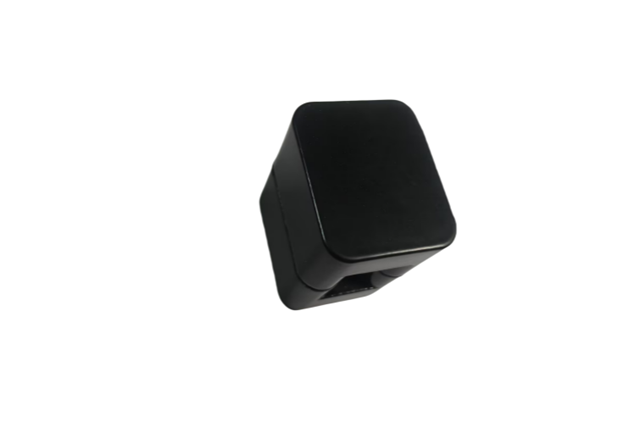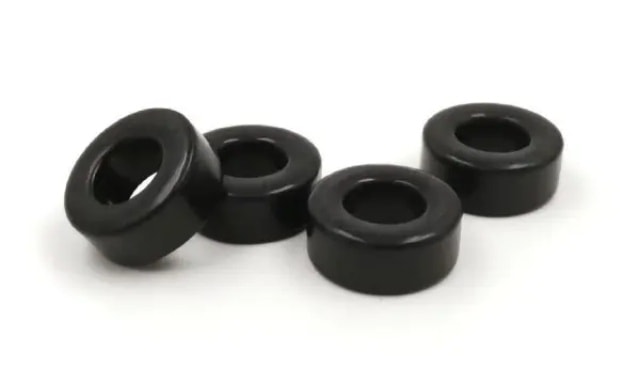Magnetic cores are a foundational element in many electrical systems, yet their complexity is often buried beneath the surface. While most discussions around magnetic design focus on inductance or winding techniques, the choice of core material can quietly determine whether a circuit runs efficiently or fails under stress. One such material—DNH-High Flux Core—offers a solution where power density, thermal endurance, and magnetic stability are non-negotiable. This article provides a clear, structured look at what these cores are, how they behave under working conditions, and why they have become essential in specific areas of power electronics.
In simple terms, a DNH-High Flux Core is a compact magnetic component that stores and transfers energy without saturating, even under high magnetic field intensity. The phrase “high flux” refers to the material's ability to tolerate stronger magnetic fields than standard cores. Unlike ferrite or powdered iron cores, which can reach saturation quickly, high flux materials hold their properties across wider ranges of current and temperature.
This capability is especially important in circuits where components must remain compact but still handle large current swings. Without a core like this, the designer might have to choose between performance and size—something not always possible in tightly packed systems.
DNH-High Flux Cores are usually made from compressed alloy powders, most commonly iron-based materials combined with silicon or nickel. These blends are specifically engineered to exhibit high saturation levels while keeping core losses in check. Each powdered grain is insulated to suppress eddy currents, helping the material operate efficiently at higher switching frequencies.
The result is a core that offers both excellent energy storage and durability. It's built for real-world environments, not just lab conditions.
High flux cores exist in a performance space between ferrite and powdered iron cores. They are more thermally stable than ferrites and more magnetically efficient than powdered iron. That balance makes them ideal for circuits where neither extreme is acceptable. They don't try to replace all other core types but offer a well-suited option when core saturation, energy density, and thermal reliability must all align.

Magnetic saturation is the point at which a core material can no longer increase its magnetic flux, even as current continues to rise. When this happens, inductance collapses, current spikes, and heat builds up rapidly. In many systems, especially in power conversion or signal filtering, this shift is not just inefficient—it can cause erratic behavior or component failure.
DNH-High Flux Cores are designed to delay that tipping point. They allow for higher magnetic flux density before saturation occurs. That means designers can move more energy through a smaller footprint, avoiding the need for oversized inductors.
High saturation cores are essential in applications where the power level is substantial but space is limited. In telecom systems or automotive electronics, for instance, engineers often face current demands that fluctuate widely. If the core saturates early in this process, the whole system could lose regulation. DNH-High Flux materials handle these surges better, maintaining stability in performance while remaining compact.
The trade-off is cost and slightly higher losses at very high frequencies compared to ferrites. But when current demands are significant, that trade is usually worth it.
In many real-world circuits, power demands vary second by second. A motor controller might draw more current during startup or braking. A power supply might face ripple conditions from fluctuating loads. These scenarios create magnetic stress on the core. DNH-High Flux Cores handle such dynamic shifts with minimal distortion to their inductance profile, keeping system behavior predictable.
The performance of DNH-High Flux Cores stems from their unique material composition. The metal powder blend—primarily iron, often combined with silicon and nickel—offers high magnetic permeability and a high saturation point. These particles are coated and pressed into shape under high pressure, resulting in a uniform core with distributed air gaps.
This internal structure is key. Instead of one large air gap like in some core designs, high flux cores distribute microscopic air gaps throughout the material. This spreads the magnetic load evenly and allows the core to respond efficiently under high field strength.
After shaping, the cores are heat-treated to align their magnetic domains. This process ensures that the material responds consistently to an external field. Good alignment reduces hysteresis loss—energy wasted as the core’s magnetism is cycled. This is particularly important in switching converters that run in the hundreds of kilohertz.
Proper treatment also improves long-term stability. The domains remain oriented even after repeated cycles, allowing the core to perform predictably over years of operation.
A final layer of protection—usually a resin or epoxy coating—adds electrical insulation and shields the core from moisture, dust, or corrosive environments. This doesn’t change the magnetic behavior, but it significantly improves reliability, especially in outdoor or industrial applications.

Temperature changes are inevitable in active circuits. Some cores lose their inductance or suffer from higher losses as they heat up. This drift leads to unpredictable circuit behavior. DNH-High Flux Cores are known for thermal stability. Their inductance remains relatively flat across a wide range—from cold starts to full-load heating.
That performance is crucial for sealed enclosures where airflow is limited. Devices like battery management systems or compact power converters rely on thermal reliability as much as electrical performance.
Beyond heat, many systems are subject to physical shock, vibration, or mounting stress. A core that cracks or delaminates under pressure won’t last long in an EV charger or a factory controller. Because DNH-High Flux Cores are formed from pressed powder, they inherently resist these stresses. The core stays intact, and the performance remains stable even in mobile or high-vibration environments.
This mechanical reliability means fewer failures in the field and reduced maintenance costs—factors that matter when scaling a design for deployment.
Over time, some core materials lose their magnetic alignment. This process, known as magnetic aging, can shift circuit behavior. DNH-High Flux Cores are treated and sealed to resist this decay. The result is not just short-term performance, but consistency over months and years of continuous use.
These cores are often found in step-down (buck) or step-up (boost) converters, especially where switching frequencies are high and board space is tight. The high saturation point allows for smaller inductors that don’t compromise on performance.
In multi-phase power supplies used in data centers or graphics systems, compact inductors are needed to reduce layout area. High flux cores enable this without triggering saturation during transient loads.
Power factor correction (PFC) stages need inductors that can store large amounts of energy for short periods. During the peak of the AC waveform, the inductor sees high current. If the core saturates, the PFC collapses, leading to regulatory non-compliance or overheating. DNH-High Flux Cores provide enough margin to ride through these peaks cleanly.
Another area where these cores shine is in noise filters. Current variations can distort the filtering characteristics if the core doesn’t hold its inductance. High flux materials stay magnetically consistent even with variable loads, maintaining filter performance across a wide spectrum of operating conditions.
Ferrite is lightweight, low-cost, and excellent for high-frequency operation. But ferrites saturate early. In high current scenarios, that can be a major weakness. DNH-High Flux Cores allow for much higher current flow in the same volume, making them better suited for power-dense environments.
Powdered iron handles DC bias well but comes with higher losses. In circuits where energy efficiency matters, this loss becomes heat. DNH-High Flux Cores match the DC bias performance while reducing overall core loss, especially in continuous operation.
No core material is perfect for every use. But in systems where efficiency, space, and stability must coexist, DNH-High Flux often becomes the preferred material—not because it’s universally better, but because it strikes the right balance for specific constraints.
Toroids, E-cores, and U-cores each offer different mounting and magnetic field characteristics. Toroids minimize EMI but are harder to wind. E-cores are easier to assemble but might require shielding. High flux material is compatible with all of these shapes, allowing flexibility in design.
High current requires careful winding. Designers often turn to copper foil or litz wire to minimize AC losses. Winding tightness, insulation, and cooling paths all affect how well the core performs under load.
Even with high flux materials, losses must be calculated. Core loss varies with frequency, temperature, and ripple conditions. Using vendor-provided loss charts, engineers can model exact conditions and avoid overheating in the final design. DNH-High Flux Cores offer predictable curves, making this modeling more accurate.
DNH-High Flux Cores are not just another magnetic option—they are a practical solution to real constraints faced in high-performance electronic design. Their ability to resist saturation, maintain inductance under stress, and operate across a broad temperature range makes them invaluable in systems where reliability and compactness must coexist. For those looking to explore high-quality DNH-High Flux Core solutions supported by technical expertise, Pourleroi offers a well-rounded selection tailored to modern engineering needs.
For technical support or product inquiries, please contact us at sales7@pourleroi.com or visit https://www.pourleroi.com/.
By continuing to use the site you agree to our privacy policy Terms and Conditions.